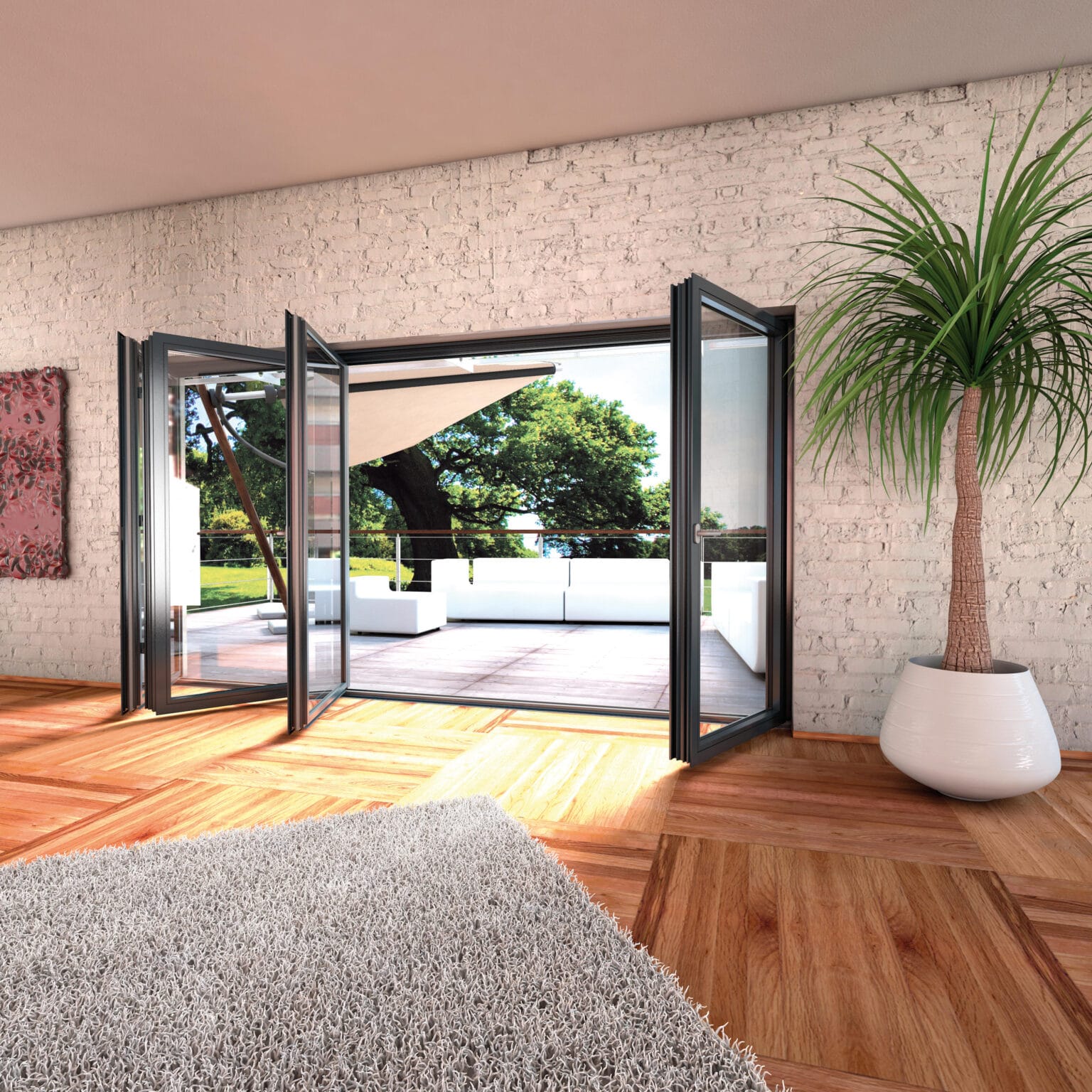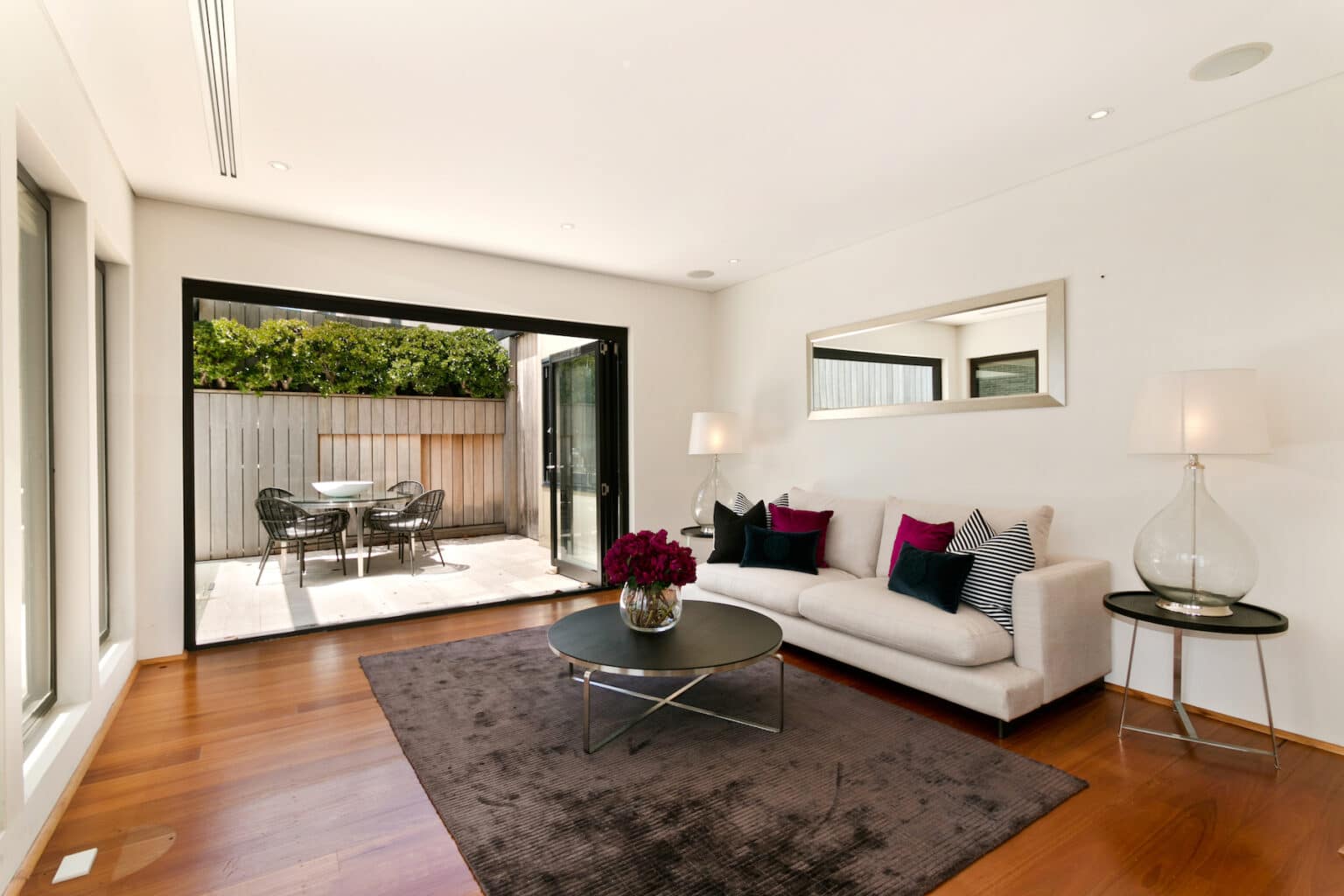The benefits of a bifold traffic door
There’s no doubt, that choosing a bifold door for a property renovation transforms a room and the project overall. But did you know that having a bifold traffic door adds even more functionality to your new door set? In this article, we tell you why a bifold traffic door makes a lot of sense when deciding how to configure your new doors.
Why a bifold traffic door makes sense

As good as a bifold door is, they do have a few drawbacks when you don’t choose a traffic door.
First of all, you can’t get in from the outside when the doors are locked from the inside. Many people actually use the back of the house to gain access to their property.
Another disadvantage to a bifold is its concertina nature, making it unsuitable for partially opening the doors when you want ventilation, but don’t want to fully open the door set.
The other disadvantage is when the bifold door is the only back door on the property. A good example is terraced houses having a new extension. Often the bifold remains the only back door out to the garden.
Choosing a bifold traffic door solves these three common issues associated with a folding sliding design.
So what is a bifold traffic door?
Simply put, a bifold traffic door is a regular hinged door incorporated into your bifold. It’s hinged just like the doors you’re familiar with and opens independently.
Its major advantage is how you can use it just like any other door. It comes with a multi-point locking system, a functional lever handle and locks with the familiar key.
When opening a bifold traffic door, the rest of the door panels, whether you have two, three, or four in your bifold, all stay in place.
Where you can have the traffic door located?
The traffic door is intended for doors with three or more panels. Depending on the configuration, you can have it either hinged on the one side fixed to the frame, or on the opposite hand, hinged onto the next door panel.
It’s even possible on a four, five or six panel set to have the traffic door in the middle. In this method it can even look like a set of French doors, opening in the middle.
More reasons why a traffic door makes sense

The reality is, that most of the year, the bifolds stay shut. It’s only on the warmer days that you can take advantage of fully opening up the door set, enlarge your room and connect it to the patio and garden.
The rest of the time the doors are shut but you still need garden access. Whether it’s for ventilation, taking out the washing, or letting out your cat or dog. All of these are solved with a bifold traffic door.
By far the most important feature is house security. Bifold doors must always lock from the inside. The traffic door retains this essential security, but at the same time, gives more convenient access when you want it.
Where you won’t need a traffic door
If the bifold door is your only back door, then designing it with a traffic door makes a lot of sense.
There are situations where you might not need it. If you have other back doors that are the primary route out to the garden, you can opt to go without it.
Of course, the larger the property and the more side or back doors you have, also make a bifold traffic door less essential.
Overall, choosing this independent panel in your new doors significantly enhances its functionality and it comes highly recommended by us.
The best bifold doors for builders and homeowners direct
Using the best selling Cortizo profile system, our folding sliding doors are superbly well-made, ultra-slim and above all, affordable from AL BIfolds.
We supply all our doors fabricated and ready for fast and easy site installation with all the assistance you want, should you need it. Our folding sliding doors come with matching single or double doors at fast lead times in standard colours.
Perfect for builders and end-users wanting to replace dated doors or as part of a new extension.
Contact us today for competitive prices and let AL BIfolds transform a home with slim, secure and weather-resistant doors, also having a desirable flush or low threshold.
